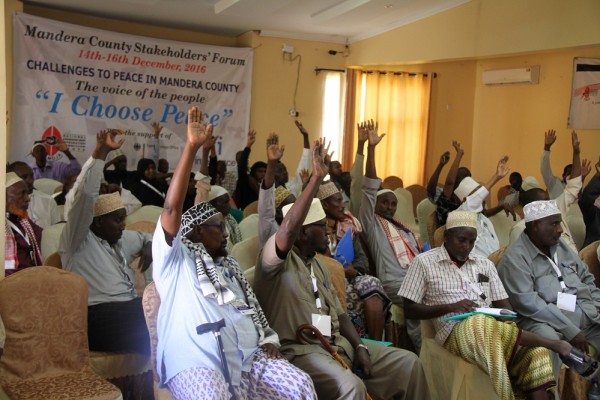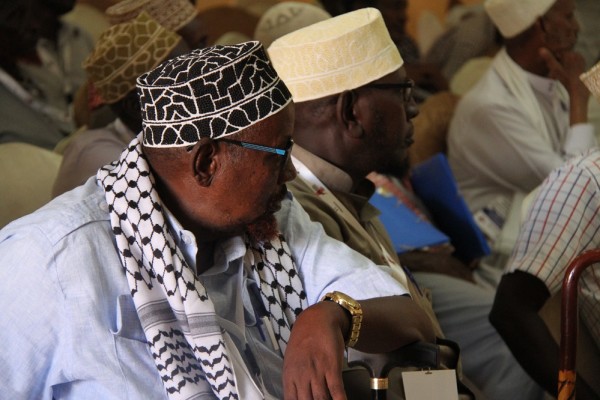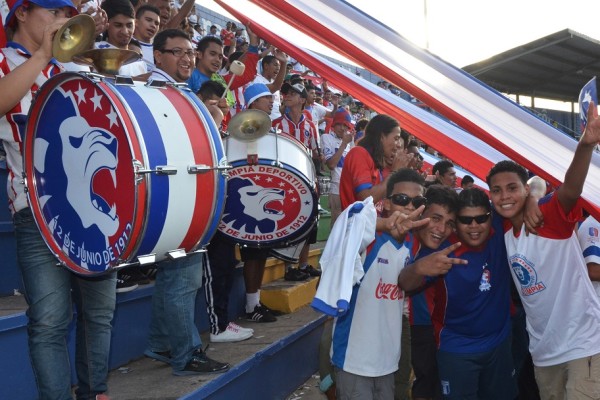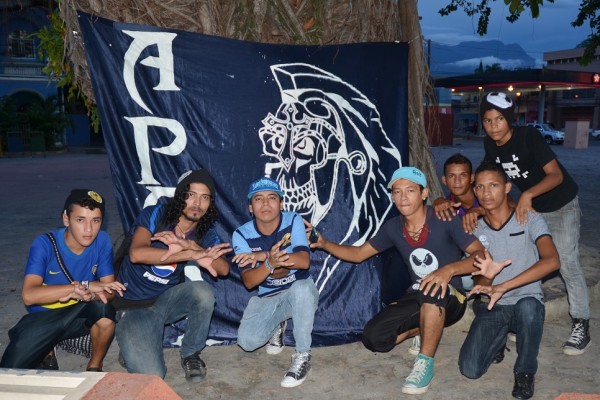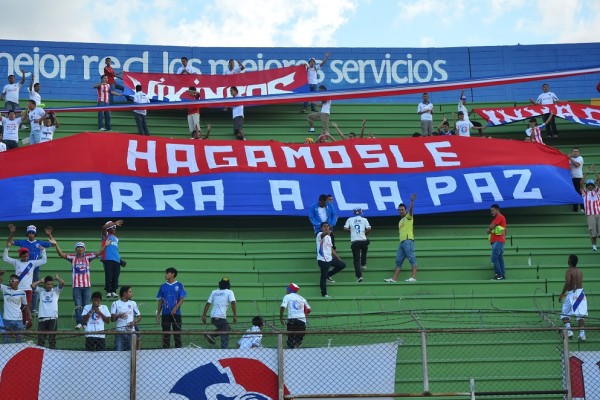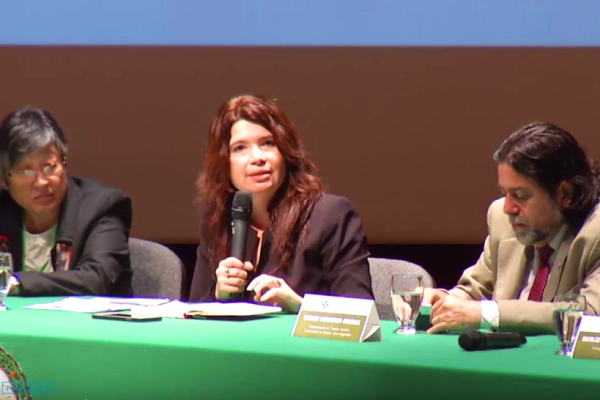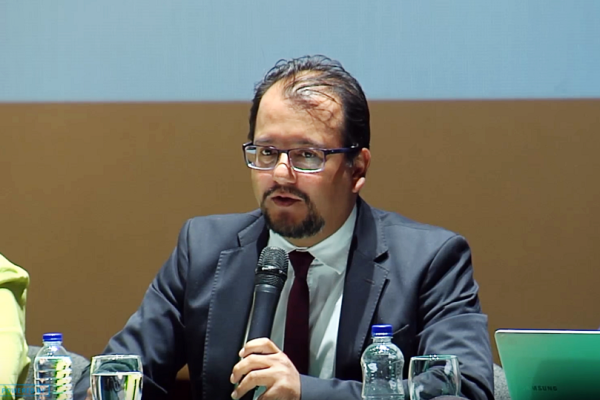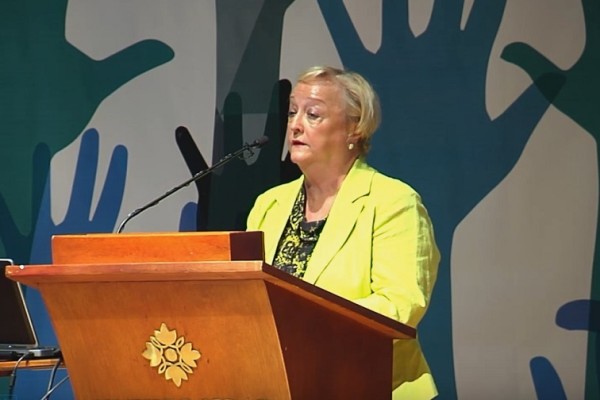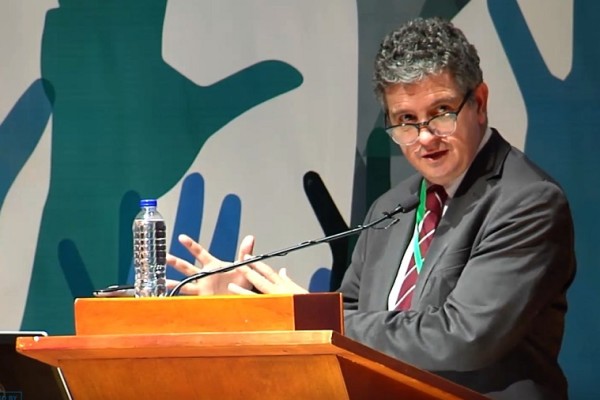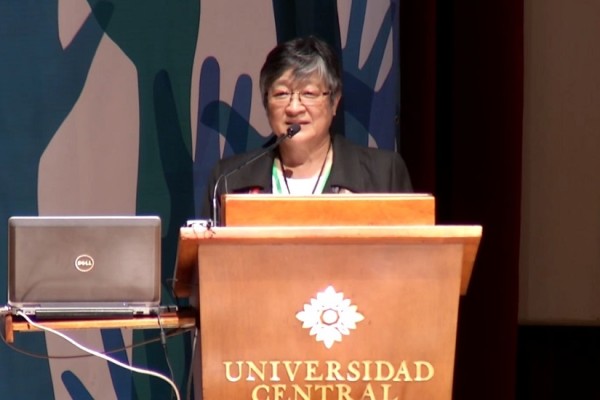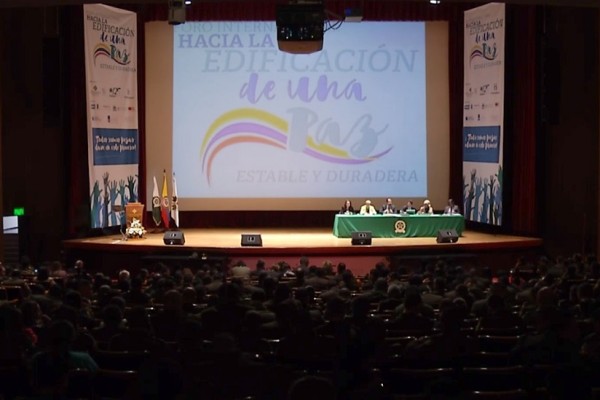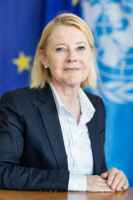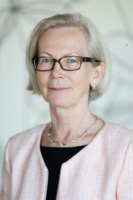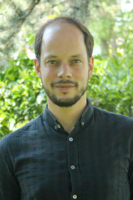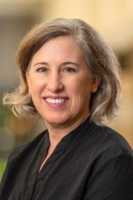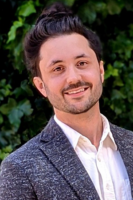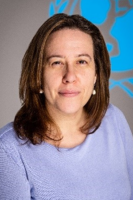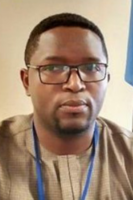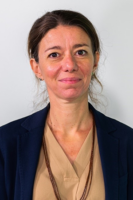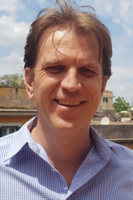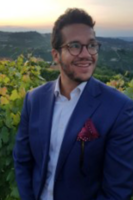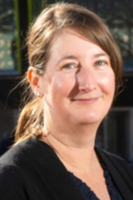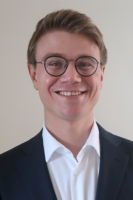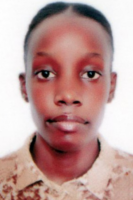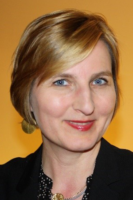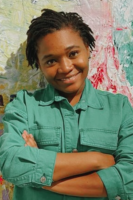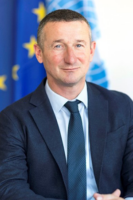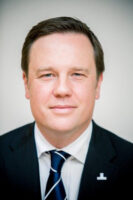On 15 - 16 February 2017, Interpeace participated in the SDG4 Regional Forum for Eastern Africa in Dar es Salaam, Tanzania. The high level forum – organized by UNESCO with the support of the SDG4 co-conveners (ILO, UNFPA, UNDP, UNICEF, UN Women, UNHCR and the World Bank) – seeks to enable Member States under the UNESCO Regional Office for Eastern Africa (Comoros, Djibouti, Eritrea, Ethiopia, Kenya, Madagascar, Mauritius, Rwanda, Seychelles, Somalia, South Sudan, Tanzania and Uganda) to present their national SDG4 roadmaps in support of the implementation of the 2030 Education Agenda. The national delegations at the forum will be led by their respective Ministers of Education and will include the SDG 4 National Focal Points.
Interpeace had a speaking role at the forum, which provided an opportunity to share its experience working with local, national and international partners to promote peace education in the Great Lakes region of Africa. This experience and suggested actions points are included in a discussion paper, available in full here.
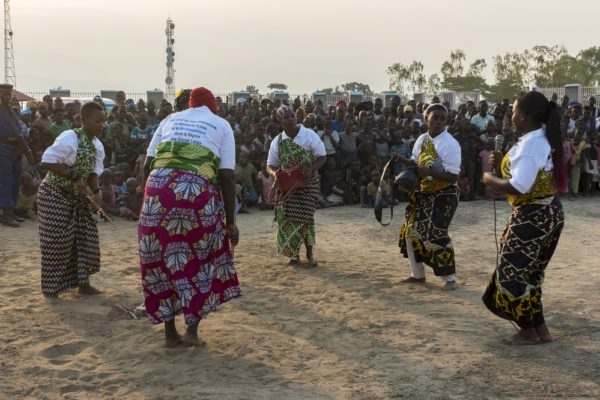
Photo credit: Interpeace
Background
The African Great Lakes Region has experienced some of the most intractable conflicts ever witnessed in Africa. Millions of lives have been lost in recurrent conflicts that have caused indescribable suffering to the peoples of the region. In the three countries of Rwanda, Burundi and the Democratic Republic of Congo (DRC), the cross-border nature of the conflicts has left profound marks on the populations of the region, particularly on the youth. Many youth have historically played a central role in the recurrent conflicts via armed groups that they join either through coercion or manipulation, resulting in a situation where violence has become the primary means of dealing with conflict.
This discussion paper presents action points that stemmed from a regional summit that took place in March 2016 in Nairobi on Peace Education in the Great Lakes Region, co-organized by the International Conference on the Great Lakes Region (ICGLR), Interpeace and UNESCO. Participants in the summit included officials from the Ministries of Education, Gender and Youth from Governments of Rwanda, Burundi and the DRC; parliamentarians; leaders of provincial governments; education practitioners; as well as technical experts in peacebuilding and peace education from the ICGLR, Interpeace and UNESCO.
Participants stressed the importance of strengthening moral and ethical values among youth to ensure that they become the drivers of constructive social change and the pillars of sustainable peace and stability in the Great Lakes region. They therefore called for the rapid advancement of a regional peace education policy that will provide a foundation for all member states to institutionalize and promote peace education within their respective countries, both at the formal and non-formal levels. The Summit further emphasized the urgency of making peace education a priority for policy makers in the region.
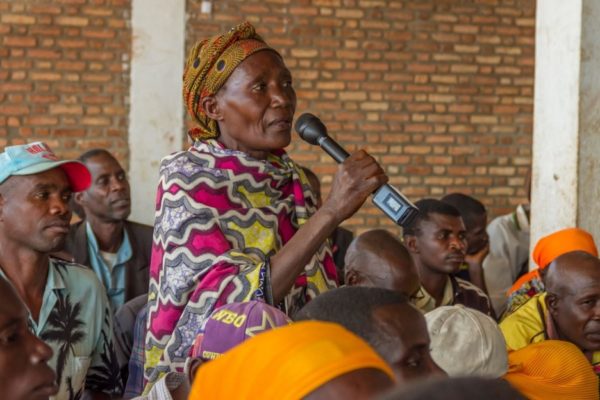
Photo credit: Interpeace
Key Proposals on the way forward
The overarching policy proposal is a call to situate peace education at the centre of a collective effort by regional states, regional bodies and development partners in the Great Lakes, with the long-term goal of forming future generations of young people who will be effective agents of peace in the region, a key factor in building lasting peace. It is in this regard that participants in the summit proposed the following recommendations to stakeholders:
- Development Partners, both bilateral and multilateral, are encouraged to further the development of peace education by supporting regional policy making efforts, the production of the necessary pedagogical tools as well as reinforcing collaboration and partnerships between relevant actors in the region.
- Regional Organizations are encouraged to place peace education as a priority item on their agenda for peace and stability in the Great lakes region. This call is particularly relevant to the mandates of the Economic Community of the Great Lakes Countries (CEPGL), the East African Community (EAC), ICGLR, the Economic Community of Central African States (ECCAS) and the African Union.
- Education Ministries are encouraged to work towards standardizing peace education curriculum within their countries, and to mobilize the requisite human capacities and material resources required that will enable the provision of effective, formal peace education. This comes out of the realization that although peace education exists in all regional countries, albeit at varying degrees of implementation, there are gaps between the existing political will and action on the ground.
Beyond formal peace education in schools, participants recommended the engagement of other actors, such as parents and the church, which can play an important role in providing peace education to non-schooling youth.
Download the full paper (PDF)
Save the date!
Building on the success of the 2015 Stockholm Peace Talks held at the Swedish Parliament, a second edition is now being planned.
Organized under the theme “Better Together”, the aim of the Stockholm Peace Talks is to inspire people and spark a discussion on how each and every one of us can play a role in fostering greater cohesion and inclusion in Sweden and abroad. In our increasingly interdependent world, respect for diversity, inclusion and cooperation among sectors are not just desirable but vital elements that lay the foundations for peaceful societies. Speakers of the 2017 Stockholm Peace Talks will share tangible experiences, personal stories and ideas to highlight the role that each and everyone one of us can play in contributing to inclusion and peace.
The event will take place on March 21st in Stockhom's City Hall, from 5:00 pm to 7:00 pm.
The event is organized by Interpeace, in partnership with Ben & Jerry's, the Geneva Peacebuilding Platform and the Swedish Postcode Foundation, with digital partners Darwin Digital.
Previous Peace Talks have been held at the United Nations Offices in Geneva and Kenya as well as at the Swedish Parliament, the Global Centre for Pluralism in Ottawa and at London City Hall. The Peace Talks were co-founded by the United Nations Office at Geneva, Interpeace and the Geneva Peacebuilding Platform with the support of the Swiss Government.
Visit the Peace Talks website for more information.
Watch the best moments of the 2015 Stockholm Peace Talks here:
Amid conflict and war, the people most affected by these circumstances have time and time again, risen from misfortune, because of their capacities to organize and transform conflict into opportunities for peace. Strengthening these already existing local capacities must therefore be a strategic priority to peacebuilding, as it ensures sustainability.
The mainstream approach to peacebuilding is for the most part premised on finding solutions to fragility. As such, conflict analysis is the primary tool used to inform programmes and policies. Though an understanding of conflict dynamics, including root causes is necessary in order to develop an appropriate response, the fragility focus tends to overshadow the capacities and processes which are present, even in fragile contexts. Because even in the most challenging situations, there are individuals and communities acting to counter the effects and causes of conflict. Failure to take stock of these efforts can, and often does, undermine the effectiveness of peacebuilding interventions, warranting criticism that programmes and policies are too generic and not sufficiently context specific.
Based on Interpeace’s experience with its Frameworks for Assessing Resilience programme (FAR) in Liberia, Guatemala and Timor-Leste, we propose that using resilience assessments alongside conflict analyses can make peacebuilding initiatives more context-specific, more locally-owned and therefore more impactful. A resilience orientation offers an operational strategy for making peacebuilding more assertive about building peace via transformative processes as opposed to being solely a response to fragility.
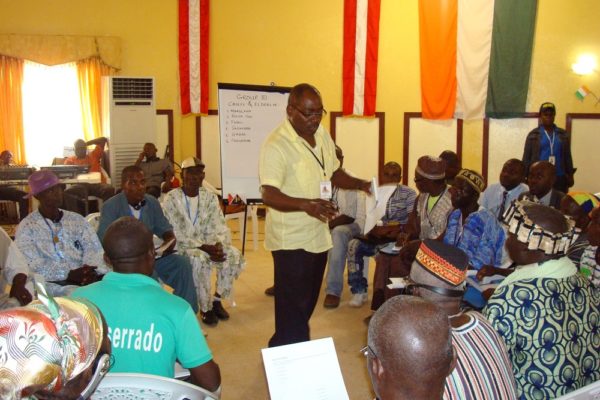
Liberia. Photo credit: Interpeace
What does resilience mean in the context of peacebuilding?
Resilience is about transformation. This “transformative” dimension resonates particularly with peacebuilders who argue that positive peace is not just about the absence of violence, but constructive social change that replaces exclusionary, unjust and inequitable structures, for those that are inclusive, participatory and equitable.
A resilience approach to peacebuilding gives particular importance to processes by which societies collectively and peacefully transform relationships to address the factors which enabled conflict to emerge in the first place. This transformative dimension evolves traditional interpretations of resilience where the emphasis is on bouncing back from an external shock.
Resilience assessments seek to identify the already existing capacities and strengths in society, including individual personality traits, solidarity networks of communities and alternative livelihood strategies. Identifying these capacities provides context-specific information and fosters nationally-owned peacebuilding processes.
Frameworks for Assessing Resilience
In 2014, Interpeace launched the Frameworks for Assessing Resilience (FAR) project to explore resilience as a key tool for advancing peacebuilding processes and to develop methods for assessing this. Rather than focusing on obstacles to peace, FAR seeks to identify resilience to conflict by looking for existing strengths, assets, capacities, strategies, processes and structures that allow individuals, communities and societies to overcome the legacy of past violent conflict, address current violence and threats to peace, and ultimately prevent future violent conflict.
As countries with fragile peace environments, Timor-Leste, Liberia and Guatemala were chosen to deploy pilot FAR programmes. Under the FAR programme, country-level research was driven and implemented by local stakeholders engaged in deepening their understanding of existing resilience capacities in their societies, and invested in promoting peacebuilding processes. In Liberia and Timor-Leste, research was led by Interpeace’s local partners, the Platform for Dialogue and Peace (P4DP) and the Centre of Studies for Peace and Development (CEPAD), respectively. In Guatemala, a team from Interpeace’s regional Latin America Office implemented the programme.
In all three countries, research teams conducted nationwide consultations through focus group discussions and interviews in order to define context-specific resilience and map the different national strategies and resources. The findings of this exploratory phase provided the basis for multi-sector dialogues among key national stakeholders in the respective countries. These Participatory Action Research dialogues have resulted in concrete policy recommendations and action plans for strengthening peace and resilience.
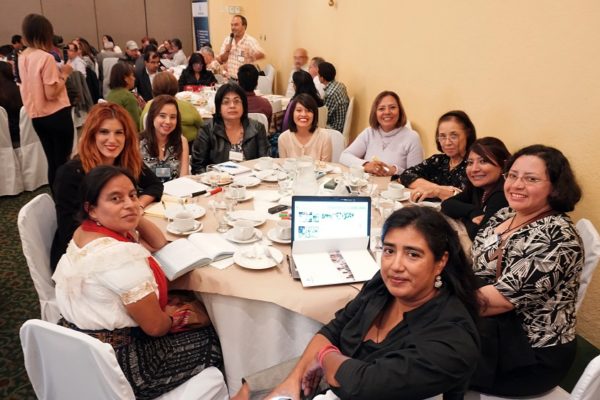
Guatemala. Photo credit: Interpeace
The convening power of the resilience approach
A resilience-orientation seeks to ascertain the existing resources that people tap into and the strategies, strengths, assets and capacities available to them, to cope with or transform conditions that threaten peace and provoke new patterns of violence.
Reorienting focus group discussions or interviews away from fragility to discuss the strengths, capacities or skills to cope can have a transformative impact on the persons engaged. The experiences of the three pilot programmes revealed that national actors have greater confidence and are more willing to take ownership of dialogue processes that are organized around resilience and their ability to effect change. “Resilience” as opposed to “fragility” has a converging and convening power. Discussing the resilience of a country rather than its fractures makes convening opposing parties easier.
Resilience does not automatically translate to peace
Recognizing that resilience is not unequivocally good but a neutral concept with the potential of bringing about both positive and negative outcomes has important implications for the design of peacebuilding strategies. Thus, the careful analysis of which capacities have the potential to bring about peace, and which need to be mitigated should be an integral part of any resilience assessment. Identifying negative manifestations of resilience - such as violent youth gangs – can inform peacebuilding strategies in particular ways. Whereas a fragility-informed intervention would likely seek to stop such violent practices and dismantle these groups altogether, peacebuilding interventions informed by a resilience orientation will explore how to build on these existing capacities and solidarity networks while focusing on mitigating or eliminating the violent tactics employed.
Resilience as a common basis for humanitarian response
Peace cannot be built without interventions that include positive economic models, security provision, political participation, social services, environmental protection, rule of law and humanitarian protection. Resilience has the potential to link these parallel interventions by integrating peacebuilding processes more effectively.
Conflict is an incremental stressor that undermines the strength and cohesion that is needed to deal with external shocks such as natural disasters. A resilience-orientation can help societies detect and strengthen existing assets before violence occurs. Resilience promotes a preventive, rather than a remedial approach to peacebuilding.
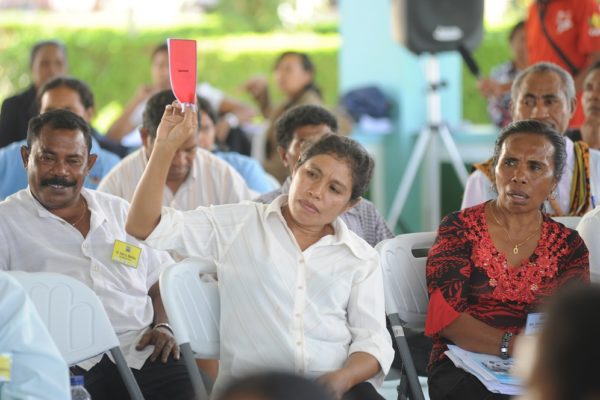
Timor Leste. Photo credit: Steve Tickner
For a better understanding of the resilience approach:
Read Guidance Note for Assesing Resilience for Peace.
Read a short brief that captures what the FAR experience has taught us about the specificities of resilience in relation to conflict and the added value of using a resilience approach to peacebuilding.
Read a briefing note on the relevance of Resilience for Peace to the pursuit of the Agenda 2030 Sustainable Development Goals.
Read more about the specific case studies:
Read the Liberia Report.
Read the Timor-Leste Report.
Read Survey Report for Timor-Leste.
Read the Guatemala Report.
Read Survey Report for Guatemala.
For three days between 14-16 December 2016, a cross-section of stakeholders from Mandera County held a peacebuilding forum in Mandera town, along Kenya’s tri-border with Somalia and Ethiopia, to validate the findings of the consultative phase of the Mandera Peacebuilding Programme.
The programme is jointly implemented in Mandera County by Interpeace and Kenya’s National Cohesion and Integration Commission (NCIC), with the support of the German Federal Foreign Office. Its objective is to achieve sustainable, long term peace in Mandera County through the collective identification of the challenges to peace and the participatory development of consensus-based solutions to the challenges.
Towards this end, the Mandera programme aims to integrate grassroots aspirations for peace, building upon local capacities and providing a strategic link with decision and policy makers at the county and national level. Its approach marks a departure from past peace initiatives, which were largely top-down interventions mobilised to contain specific situations that had already escalated into violence.
Participants at the forum included Mandera Governor Ali Roba, Senator Billow Kerrow, NCIC CEO Hassan Sheikh Mohamed, all Members of Parliament from the County and other local leaders, Interpeace’s Johan Svensson and representatives of the local communities.
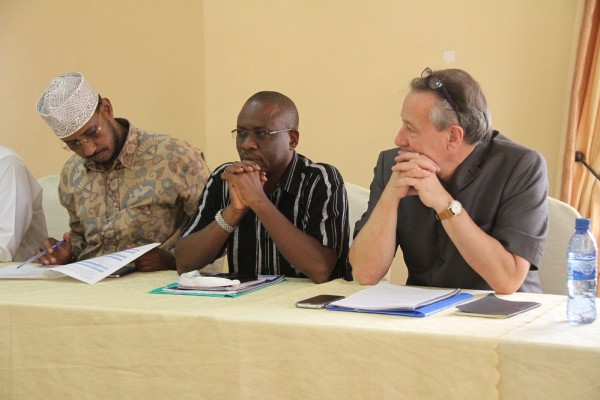
LEFT to RIGHT - Mandera East MP Abdiaziz Ali Farah, County Commissioner Fredrick Shisia and Interpeace's Johan Svensson. Photo credit: Interpeace.
The forum was officially opened by Governor Roba, who set the stage by denouncing the clannism that has long made peace elusive for residents of Mandera.
“When a wrong is committed, let us focus on the individuals suspected of culpability, not their clans collectively,” Governor Roba said in his opening remarks.
Mandera’s population is mainly ethnic Somali. Despite being almost homogenous in the ethnic sense, rivalries between the four main clans – the Garreh, Murule, Degodia and the ‘Corner tribes,’ which are the smaller clans – have often led to episodes of conflict, which periodically degenerate into violent clashes. The conflicts, traditionally fuelled by competition over resources, have been exacerbated by new conflict drivers such as competition between clans for political influence, disputes over land and rampant insecurity due to constant attacks by Al Shabaab militants from Somalia.
The devolution of governance in Kenya, which was a key plank in a new Constitution adopted in 2010, has intensified competition for political positions, perceived as a guarantee for access to economic resources by the “winning” clans to the disadvantage of the “losing” clans. This contestation over political posts has emerged as a critical point of concern for the residents of Mandera ahead of local and national elections scheduled for 2017.
Considering the complexity of the situation, stakeholders resolved that all hands are needed on deck to make sustainable peace a reality for the people of Mandera.
“Everyone has a role in building lasting peace,” said Mr Johan Svensson, representing Interpeace in Eastern and Central Africa. “It is a process that requires the participation of all the stakeholders across the society.”
The NCIC – formed to facilitate and promote equality of opportunity, good relations, harmony and peaceful coexistence between persons of different ethnic, colour, religious and racial backgrounds in Kenya – has pledged its full support in bridging between the vertical space between the aspirations of grassroots communities in Mandera and grassroots populations at the national level.
“We take issues of peace very seriously, and we will spare no effort in facilitating this initiative to bring lasting peace to Mandera,” NCIC’s CEO Hassan Sheikh Mohamed said.
The role of social media also came into focus at the forum, with participants urging the NCIC to educate Kenyans on the responsible use of social media to help avert poll violence.
“Social media is useful, but let us not allow it to fuel divisions. We are Muslims – we are a people of peace,” said Mandera Women Representative Fathia Mahboub.
Related Stories
Kenya: Raising Local Voices for Peace in Mandera
Honduras is one of the poorest countries in Latin America and at the same time, one of the most violent in the world according to the number of homicides registered annually. In this context of institutional fragility, inequality, high levels of poverty, corruption and impunity, there is nevertheless an event that awakens hope in the Honduran society: football. For the Honduran society, football is a 90-minute pause of happiness amid decades of anomie.
In societies where there are no institutional and social mechanisms for conflict transformation, violence that starts as a natural rivalry between two football teams, can transcend the limits of a stadium and become a social problem.
An example of this, is the violence related to the football clubs in Honduras. Young fans of a local football team, who are victims of social exclusion and lack of opportunities, have expressed their hopes and identity in the support they give to a football team. This has transitioned from a natural rivalry between teams, to violence in the streets. The violence that is perpetrated between the fans of these football clubs has evolved from fights and blows in the stadium to open armed confrontations within their own communities.
In contexts, such as Honduras, youth groups (gangs, sports and school clubs, rock groups and other forms of youth groupings) represent a mechanism of cohesion, identity and solidarity that are strengthened and radicalized due on the one hand, to the excessive violence exercised by other forms of associations and social integration (school and family) and, secondly, the repressive action of State agents (police).
Interpeace and sports clubs in Honduras
In February of 2014, Interpeace’s Office for Latin America launched the project “Sports Clubs for Peace” with the support of the Berghof Foundation. Through this programme, Interpeace worked to strengthen the capacities of the leaders of the two main sports clubs in the country, the “Ultra Fiel” and the “Revolucionarios,” to address conflicts in non-violent and creative ways. Additionally, Interpeace contributed to building a positive perception of the sports clubs as relevant actors for the construction of peace in Honduras. In order to reach this objective, Interpeace implemented a training programme on issues related to conflict transformation, peace culture and mediations with young members of the sports clubs in Tegucigalpa, San Pedro Sula, la Ceiba and Choluteca, so that young participants could have the necessary tools to become agents of change in favor of non-violence and peace in the country.
Journalism, youth and sports for peace in Honduras
In Honduras, the young sports club’s members have been victims of stigmatization and criminalization for belonging to these clubs. This is aggravated by the fact that football is one of the activities in the country that is given more media attention. In this way, the sports clubs members are permanently in the public eye, associated less with the sport and more with the violence.
As part of the efforts to deepen the work that began with “Sports Clubs for Peace,” beginning on November 2016, Interpeace launched the project "Journalism, youth and sports for peace in Honduras." In an alliance with Free Press Unlimited and the Central American digital newspaper El Faro, the objective of the project is to contribute to the non-violent transformation of conflicts by changing perceptions and reducing the stigmatization of young people in Honduras.
The project "Journalism, youth and sports for peace" will seek to help young members of the main Honduran sports clubs, become agents of change in favor of nonviolence and peace in the country. In addition, the project seeks to strengthen ties between sports club members and the Honduran press in favor of alternative narratives that focus on understanding the causes of violence and contribute to a positive change in the public perception of marginalized youth. Listening to the voice, the human dimension and the story of young people immersed in cycles of violence, is an essential step for the construction of peace in Honduras.
Interpeace was part of the International Forum "Towards building a stable and lasting peace," which took place at the Central University of Colombia, with the support of the Colombian National Police, from November 16 through 18.
Within the framework of this event, the challenges that Colombia will face after the end of the armed conflict were analyzed by the participants. Moreover, they examined the constitutional, legal, institutional and political conditions that can facilitate building peace in the country and also sought to propose an innovative approach to rethink the concept of security and coexistence under the principles of peacebuilding.
Representatives of Interpeace and our strategic partner, Alianza Para la Paz, shared experiences and reflections on the lessons learned in other contexts, such as South Africa, Northern Ireland and Guatemala, and the importance of understanding peace agreements, as the beginning of a stable and lasting peacebuilding process.
Ana Glenda Tager, Regional Director for Interpeace’s Office for Latin America, moderated the debate “Towards a shared vision of peace: challenges and obstacles.” She highlighted the importance of the forum as an occasion to define the bases of action for the Colombian National Police in the field of peacebuilding, particularly through its specialized unit, UNIPEP. Additionally, she spoke about the geopolitical context and the causes that generated the Colombian civil war. Ana Glenda Tager also stressed the importance of establishing a viable methodology for building peace in Colombia and pointed out: “Among the challenges, one of the fundamental obstacles is the fear of change, the fear of transformation. For this reason, in the peacebuilding process, the ‘how’ is as important as the ‘what’.”
Watch Ana Glenda Tager at the Forum here (Min 1.07.00 - in Spanish).
Project Director of our strategic partner Alianza Para la Paz, Otto Argueta, also moderated a debate during the Forum: "Constitutional, legal, political and institutional determinants that will facilitate building peace." During this dialogue, he stressed the importance of putting the human factor at the center of the peacebuilding debates, that is, the necessity to understand the perspectives of both parties involved in the conflict. In addition, he spoke about how peace is not an event crystallized in time, but rather a dynamic process of reconciliation between opposing parties, whose most important result is the reestablishment of the bonds of trust. "As Mandela once stated - peace is not made with friends, it is made with enemies - and this means to make an effort to approach the others," he expressed.
In the same debate, Monica McWilliams, a key figure in the Northern Ireland peace negotiations and Vice-Chair of Interpeace’s Governing Council, shared her experiences during the peace process in her country: “In Northern Ireland, we spent many months talking to guerrilla leaders, intelligence services and with the police. However, it wasn’t until the day when peace was signed, when it was possible to have all these actors agree, that we realized that from that moment on, the hardest work was beginning.” McWilliams added that the military solution did not work in Northern Ireland, and that the best results were achieved through dialogue, diplomacy and politics.
Watch Otto Argueta and Monica McWilliams at the Forum here (Monica McWilliams in Min 1.13.00 and Otto Argueta in Min 2.10.00 - in Spanish).
Graeme Simpson, Director of Interpeace USA, shared his experience in peacebuilding and transitional justice in South Africa. During the session “Reconfiguration of the concept of security and citizen coexistence in a post-war context,” Graeme Simpson stated that in the peacebuilding field there are no prefabricated models and each society must find the best solutions for their specific context. He added that when addressing the issue of transitional justice, and specifically of amnesty, key elements in the Colombian peace process that must be taken into account, are not only the rights of demilitarized guerrillas, but also the rights of victims of the guerrilla movement, in order to legitimize the agreements. "When building peace, it is essential to rebuild trust between the people and between the people and the state. In South Africa, we did not address the social and cultural issues behind the agreements. These issues are fundamental to building peaceful and equitable societies,” Simpson said.
Watch Graeme Simpson at the Forum here (Min 00.18.00 - in Spanish).
Interpeace’s Regional Office for Latin America has worked in Guatemala for over a decade and as part of the exchange of experiences and lessons learned from countries that have dealt with the implementation of peace processes, invited human rights activist Helen Mack to participate in the forum. Helen Mack is the founder of the Myrna Mack Foundation and is recognized worldwide for her fight against impunity in Guatemala. During her intervention, she spoke about Guatemala’s peacebuilding challenges and her personal involvement. “I have been stigmatized and criminalized for demanding rights, for example the right to justice,” Mack expressed. She highlighted not only the positive accounts of Guatemala’s peacebuilding experience, but more importantly spoke about the mistakes that were made and what wasn’t done.
Watch Helen Mack in the Forum here (Video in Spanish).
The international forum "Towards building a stable and lasting peace" constituted a privileged space for reflection and analysis of this fundamental stage in the history of Colombia. The forum provided the opportunity to get views and opinions from experts on peacebuilding, transitional justice and international cooperation. In addition, several issues were addressed about the peace process with the FARC-EP for the termination of the conflict. Moreover, opinions and proposals were heard to identify common denominators, innovative programs and good practices, to address the challenges for the consolidation of a peaceful, equitable and inclusive Colombia.
